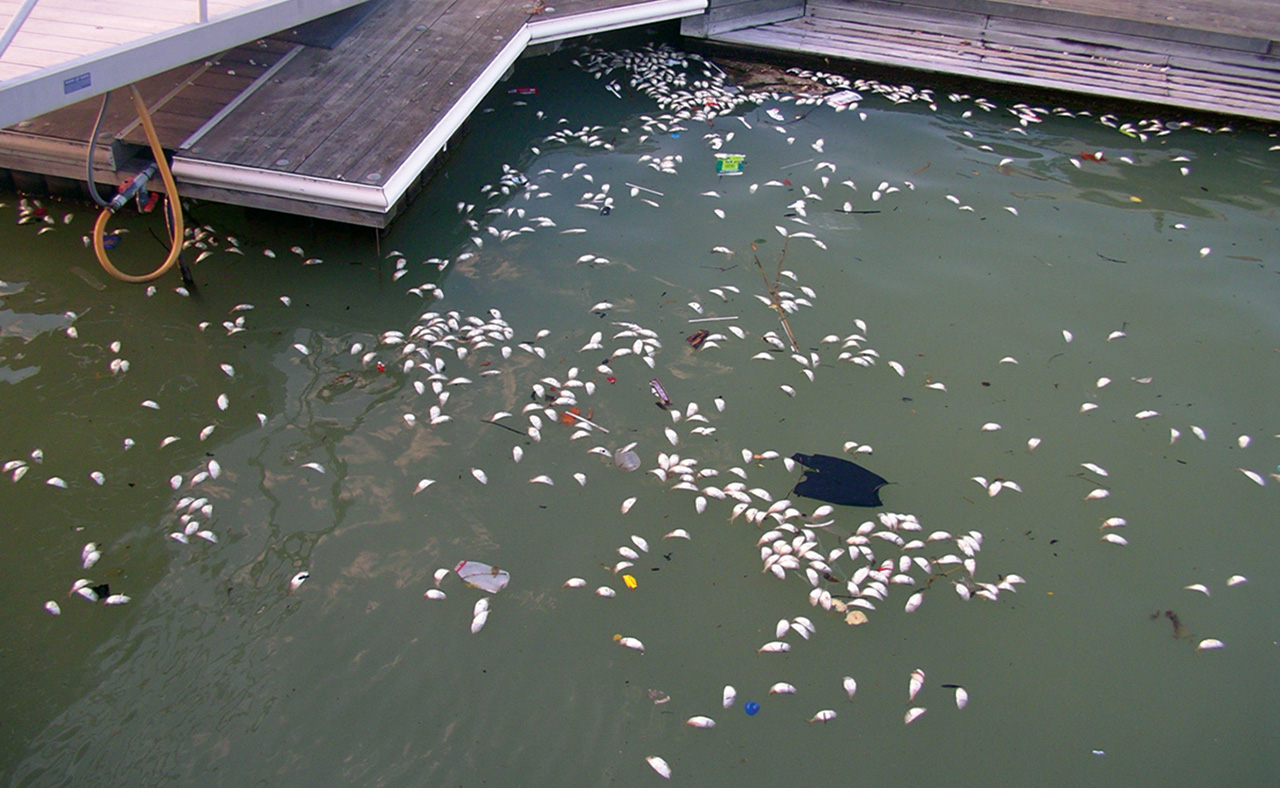The oxygen dissolved in the Chesapeake Bay is crucial for the organisms living in it
All of the Chesapeake Bay's living creatures — from the fish and crabs that swim through its waters to the worms that bury themselves in its muddy bottom — need oxygen to survive. As dissolved oxygen levels decrease, it becomes harder for animals to get the oxygen they need to survive.
Low dissolved oxygen is often the result of eutrophication. This is when too many nutrients in the water lead to algal blooms. When the algae die and decompose, the decomposition process uses up dissolved oxygen in the water.

Low dissolved oxygen levels may lead to fish kills, such as this one in Baltimore Harbor. Source: MD Department of the Environment.
- 2013
- 2012
- 2011
- 2010
- 2009
- 2008
- 2007
- 2006
- 2005
- 2004
- 2003
- 2002
- 2001
- 2000
- 1999
- 1998
- 1997
- 1996
- 1995
- 1994
- 1993
- 1992
- 1991
- 1990
- 1989
- 1988
- 1987
- 1986
No story for this year